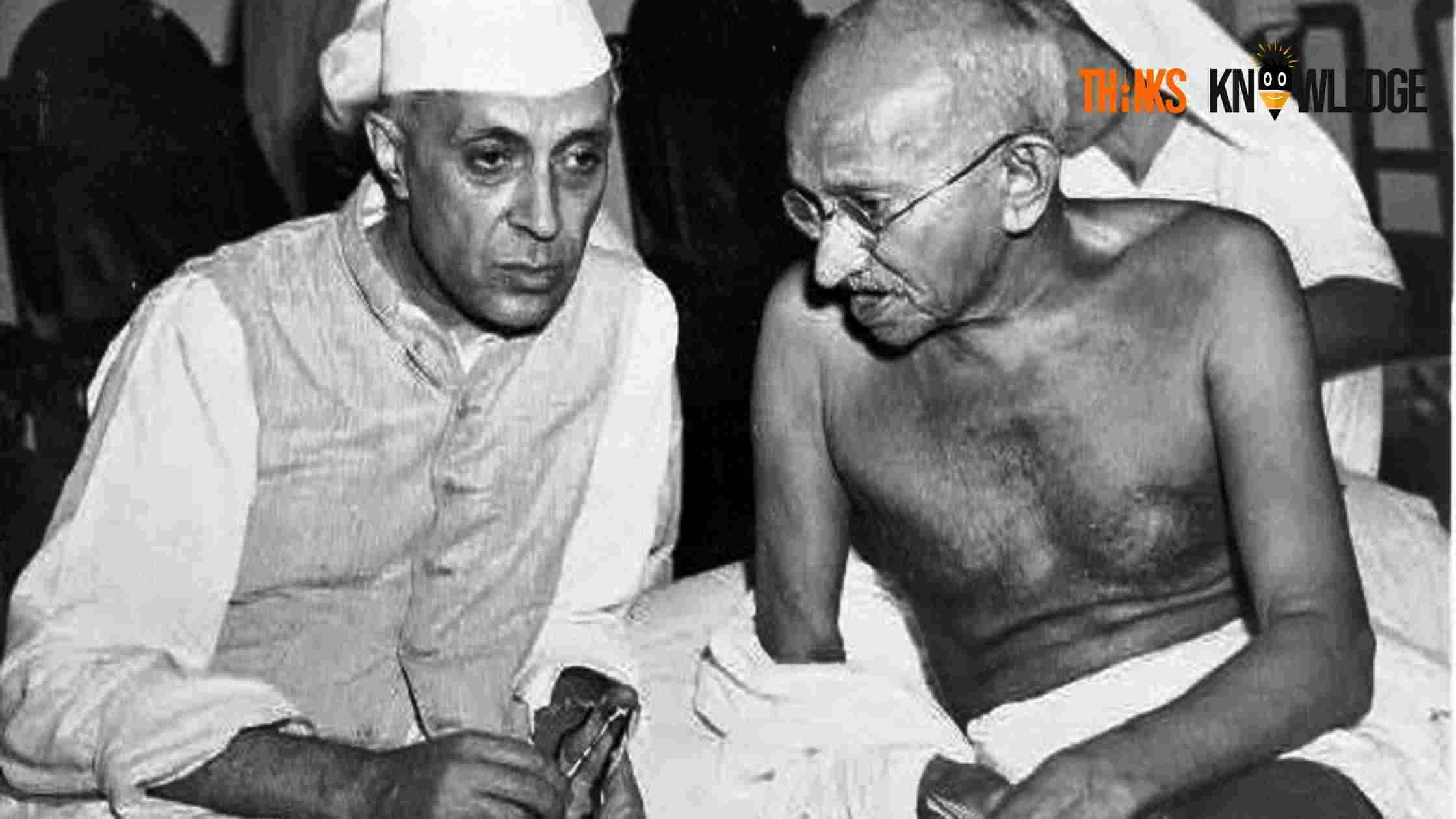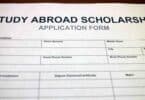All those heroes who contributed greatly to the liberation from the colonial rule are called “Freedom fighters”. The freedom and liberty we enjoy today are the results of the struggles and suffering of freedom fighters from India.
- Many of them gave their lives to save India from the cruel British rule.
- While some freedom fighters of India believed that non-violence and peaceful protests were possible, others were revolutionary. Although they came from different backgrounds and held different ideologies they all stood for the same cause: India’s Independence.
This article will discuss the freedom fighters of India and their significant contributions.
Table of Content
List of freedom fighters of India and their contributions
This is a list highlighting some of the most important freedom fighters of India who made many contributions to the struggle for Independence.
1. Sardar Vallabhbhai Patel (1875 – 1950)
- He was secretary to Gujarat Sabha, which later became the Gujarati section of the Indian National Congress.
- He started the Kheda Satyagraha, in Gujarat, under Mahatma Gandhi’s guidance, in 1918. It was against the British government, which imposed high agricultural taxes during the period of famine.
- He fought in 1928 for the Bardoli people, who had increased their tax rates during the financial crisis. He was able to cancel the higher tax rates and return confiscated lands back to the people. He was awarded the title of ‘Sardar’ after his victory.

- He was the first Indian deputy prime minister after independence and was instrumental in the unification of nearly 565 Princely States under the Indian Union.
- Patel was awarded the title of “Iron Man of India” for his bravery at such a young age. Sardar Vallabhai Patel, the full name of Patel Saheb, was born in 1875. He is well-known for his contributions to India. Who fought for India against the Britishers and became one of the most important freedom fighters of India.
- He was a great contributor to the country’s Bardoli Satyagraha field. He was a prominent lawyer, but he decided to give up his career and work for the freedom of the country.
Visit us- National Youth Day Celebration
2. Mahatma Gandhi (1869-1848)
- He returned to India in 1915 and traveled around India, learning about Indian problems. He then initiated and led three major movements: the Champaran Satyagraha in 1917, Kheda Satyagraha in 1918, and the Ahmedabad Mill Strike of 1918.
- He organized the Satyagraha Sabha in 1919 against the Rowlatt Act of 1918, which he called “The Black Act”.

- He started the Non-Cooperation Movement in 1920 to get Purna Swaraj and self-governance.
- He was the leader of the Salt Satyagraha (also known as Dandi March, in 1930) to break the salt law.
- After the Cripps mission failed, he started the Quit India Movement at a session in Mumbai of the All India Congress Committee.
- Mahatma Gandhi, or bapu, is often referred to as the “Father” of the Nation. He was awarded this title for the great works he did for his country. He was the man behind India’s independence and the one who inspired civil rights movements.
- He believes in nonviolence and he fights for India without any violence and becomes a freedom fighter of India.
3. Motilal Nehru (1861 – 1931)
- He actively participated in the 1916 Home Rule League movement, which Annie Besant started.
- In 1919 and 1928, he was elected President of the Congress party. He quit his law practice and joined Mahatma Gandhi’s Non-Cooperation Movement in 1919.
- In 1919, he started The Independent newspaper. It was based in Allahabad.
- He founded the Swaraj Party with Chitta Ranjan Die in 1923. This party demanded complete political freedom and self-government in India.
- He was arrested for participating in the Salt Satyagraha in 1930. He spent a few months in prison.
4. Jawaharlal Nehru (1889 – 1964)
- He was arrested many times during the freedom struggle and spent 9 years in prison between 1921 and 1945.
- He was a participant in the Non-Cooperation movement, and he led the movement in the United Province. He was also a participant in the salt Satyagraha.
- Jawaharlal Nehru and Subash Chandra Bose argued that dominion status should not be granted to the Indian National Congress. However, the Indian National Congress insisted on complete independence or Poorna Swaraj as its goal.
- He established economic policies in India by appointing 1938 the National Planning Commission.
- Gandhi named him his political heir in 1942.

- He was elected the first Prime Minister in India on August 15, 1947.
- Pandit Jawaharlal Nehru, the father of our country’s nation, was Pandit Motilal Nehru. His mother was Devi Swarup Rani. He was a key figure in Indian Politics at the time. He was born in 1889. He was a politician and freedom fighter of India. Mahatma Gandhi was a major influence on his passion for freedom in other countries. He was also known as Panditji or Pandit Nehru.
5. Lala Lajpat Rai (1865-1928 )
- Lala Lajpat Rai (also known as the Punjab Kesari) joined the Indian National Congress 1881.
- He was also one of the cofounders of the Punjab National Bank, which was founded in 1894.
- In 1885, he established the Dayanand Anglo-Vedic School at Lahore.
- He founded the Indian Home Rule League of America (New York) in 1917.
- He founded the Servants of People Society of Lahore, in 1921, to enlist national missionaries and train them for service in the service of the motherland that’s how he become freedom fighters of India
6. Bal Gangadhar Tilak (1856 – 1920)
- He was co-founder of the extremist wing the Indian National Congress with Bipin Chandra Pal and Lala Lajpatrai.
- He initiated the celebrations of Ganeshotsav (Shimiji Utsav) in 1894. He propagated nationalist ideas to the masses through these festivals.
- He started the Swadeshi movement in 1905
- He started the Home Rule League movement in Pune in 1916. It was concentrated in the areas of Maharashtra, Central Province and Maharashtra, while Annie Besant’s was based at Madras with an all-India reach.
- He founded two newspapers, Mahratta (English), and Kesari(Marathi), which propagated the cause for national freedom.
- For national awakening, he introduced the three-point program, also known as Trisutri- Swaraj Swadeshi, Swadeshi, and National Education.
7. Bipin Chandra Pal (1858 – 1932)
- In 1886, he joined the Indian National Congress and attended many sessions.
- He pleaded in 1887 for the repeal of the arms act because it was discriminatory.
- He was a proponent of national education, and he emphasized the importance for women to be educated.
- He was also a supporter of the Swadeshi movement, along with Bal Gangadhar Tilak.
- He voted against the partitioning of Bengal in 1905, and he was a part of movements like the Swadeshi movement or the Non-cooperation movement.
- Later, he joined the Brahmo Samaj where he advocated for widow remarriage. He was also against the caste system that was prevalent at the time in the country.
8. Chittaranjan Das (1870 – 1925)
- Along with Motilal Nehru, he founded the political party Swaraj Party in 1923.
- He was a leading figure in the Non-Cooperation Movement in Bengal.
- He assisted Bipin Chandra Pal, and Aurobindo Gosh in publishing their English weekly, ‘Bande Mataram. Through this they promoted the ideals of Swaraj.
- He denounced 1919’s Montague Chelmsford reforms, which introduced a dual government system (Dyarchy).
- He was a part of Mahatma Gandhi’s Non-Cooperation Movement and he boycotted British clothing in Bengal.
9. Pheroze Shah Mehta (1845 – 1915)
- He was also one of the founders of the Indian National Congress, which was established in 1885.
- In 1890, he was elected President of the Indian National Congress.
- He was a founding member of the Bombay Presidency Association, which he also founded with Justice Telang in 1885. He served as its secretary.
- He was responsible for the drafting of the Bombay Municipal Act of1872 and brought about reforms within the Bombay Municipal Government. He was regarded as the “Father of Bombay Municipality”.
- He was the President of Bombay Municipality 4 times: 1885, 1885 and 1905, and again in 1911.
- He started the newspaper Bombay Chronicle in 1910. Through it, he distributed information on the South African ill-treatment of Indians.
- He was instrumental in the creation of the Central Bank of India, which was then known as the Swadeshi Bank.
- He was elected President of the Reception Committee in 1889 and 1904. This was when the Congress sessions took place in Bombay. He is also known as the “Lion of Bombay”.
- Bhagat Singh believed that revolutionary socialism was a political philosophy.
- He founded the Naujawan Bharat Sabha in 1926. It was a rebellion against the British that gathered the peasants, workers, and young people. He was the Sabha’s secretary.
- He was an active member of the Hindustan Republican Association, and he joined it. He became the leader of this association later.
- He organized study circles in Lahore with the assistance of Sukhdev where he participated in the political discussions.
- Bhagat Singh and other revolutionaries killed the police officer who was responsible for the killing of Lala Lajpat Rai, his leader. He mistakenly identified himself as John Poyantz Saunders and shot him.
- Batukeshwar Dutt and him threw bombs into the Central Legislative Assembly to protest the Defence of India Act of 1915. They also threw leaflets.
- Bhagat Singh and Sukhdev were later arrested and hanged for their revolutionary activities.
10. Madan Mohan Malaviya (1861 – 1946)
- He founded the Banaras Hindu University with Annie Besant, Raja of Darbhanga (Rameshwar Singh), and Sunder Lal in 1916
- During the struggle for freedom, he was a bridge between extremists and moderate wings of the Indian National Congress.
- On four occasions, he was the President of Indian National Congress: 1909, 1918 and 1930, as well as 1932.
- From 1909 to 1920, he was a member of the Imperial Legislative Council.
- He was a participant in the Dandi Marches and Civil Disobedience Movement.
- He was a strong supporter of compulsory and free education, as well as the nationalization of the railways. He was against the British system of indentured labor.
- The Ganga Mahasabha was founded by him to stop the construction of dams on the Ganga.
11. Jyotiba Phule (1827 – 1890)
- He established India’s first girls’ school for girls in August 1848. It was located at Tatyasaheb Bide’s home. He later established two schools for girls of lower castes (Mahars, Mangs).
- He was the first to promote women’s education in India.
- He was a fighter for widower upliftment and founded in 1860 an orphanage for widows.
- He was against child marriage, the sati system, and caste discrimination that were prevalent at the time in the country.
- He founded the Satyashodhak Samaj, or Society of Truth-Seekers, in 1873 with the aim of improving the political access and social rights of the poorest sections of society
12. Chandra Shekhar Azad (1906 – 1931)
- He was arrested for participating in Gandhi’s Non-Cooperation Movement. After the movement was suspended, he decided to stop using violence and joined the Hindustan Republican Association.
- Chandra Shekhar Azad, the founder of the Hindustan Republican Association (Pandit Ram Prasad Bismil), and other prominent leaders of the Hindustan Republican Association reorganized the organization under a new name: Hindustan Socialist Republican Association.
- He was involved with the Kakori rail conspiracy of 1925, and the assassination John Poyantz Saunders (1928), while seeking revenge for the death of Lala Lajpatrai.
Visit us- EDUCATION SYSTEM IN INDIA
13. Dadabhai Naoroji (1825 – 1917)
- He was one the founding members of the Bombay Association, which was established in 1852.
- Dadabhai Naoroji, W.C.Bonnerjee and W.H.S.Bonnerjee established the London India Society in London in 1865.
- He founded the Indian National Congress with Allan Octavian Hume, Dinshaw Eduljiwacha, and others in 1885.
- Thrice, he was elected President of the Indian National Congress — 1886-1893 and 1906.
- He represented India at the International Congress of Social Democrats, Amsterdam in 1905.
- Dadabhai Naoroji’s most significant contribution was his expose to India’s economic exploitation by the British through the book, ‘Poverty & Un-British Rule in India’.
- He opposed the 1878 Vernacular Press Act. He supported the Indianization of bureaucracy and Indian representation in the House of Commons.
14. Subhas Chandra Bose (1897 – 1945)
- In 1920, he passed the Indian Civil Service exam. He quit his job after the Jallianwala Bagh Massacre and returned from England to India to fight for freedom.
- He was a part of the Non-Cooperation Movement led by Mahatma Gandhi.
- In 1925, he was arrested for his nationalist activities. He was released in 1927 and was soon elected President of the All India Youth Congress.
- He was later elected President of the Indian National Congress in 1938. He also formed a national planning commission, which developed a policy for broad industrialization.
- He formed the All India Forward Bloc in the Indian National Congress in 1939 to unite the extreme elements of the Congress party.
- He founded the Provincial Government of Free India in Singapore in 1943.
- He was appointed to lead the Indian National Army, which Rash Behari Bose founded. He reorganized the army and renamed it Azad Hind Fauj in 1943.
- Bose is well-known in India as “Netaji”. Born in 1897, he was raised in Orissa. After the Jallianwala bagh Massacre, Subhash Chandra was shaken and returned to India in 1921. Subhash Chandra was also a member of Civil Disobedience and even joined Indian National Congress.





